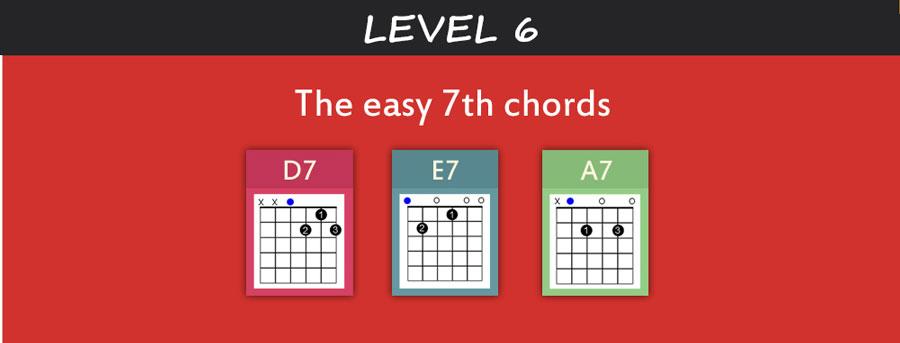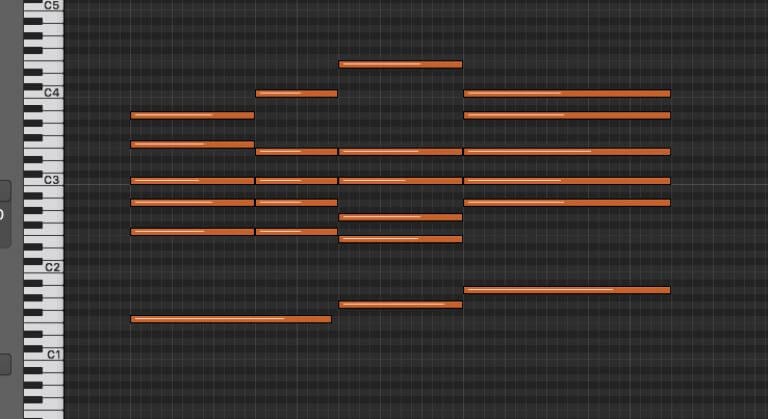Are you tired of playing the same old basic chords on your guitar? Ready to take your skills to the next level and unlock your full potential as a rockstar in the making? Well, strap in and get ready to explore the wild and wonderful world of advanced guitar chords! Grab your axe, dust off those strings, and prepare to be amazed as we delve into the realm of musical mastery where even your fingers will be singing along. So, get ready to rock out and unleash your inner guitar god – it’s time to shred like never before! the Basics: Beyond Open Chords”>
the Basics: Beyond Open Chords”>
Contents
- 1 Understanding the Basics: Beyond Open Chords
- 2 The World of Barre Chords: A Gateway to Advanced Playing
- 3 Exploring Extended Chords: Adding Color to Your Music
- 4 Mastering Jazz Chords: Complexity and Sophistication in Harmony
- 5 The Role of Altered Chords in Musical Expression
- 6 Incorporating Chord Inversions for Fuller Sound and Richer Arrangements
- 7 Navigating Through Modal Chords: Expanding Your Musical Vocabulary
- 8 FAQs
- 9 Keep Strumming and Unlock Those Chords!
Understanding the Basics: Beyond Open Chords
So you’ve mastered those open chords like the back of your hand. Your fingers glide effortlessly from G to C to D like a pro. But now, it’s time to take your guitar playing to the next level. It’s time to go beyond open chords and explore the vast world of more complex and interesting chord shapes.
One of the first things you’ll want to tackle is barre chords. Ah, yes – the bane of every beginner guitarist’s existence. But fear not! With a little practice (okay, a lot of practice), you’ll soon be able to conquer the dreaded F barre chord and impress all your friends with your newfound skills.
Next up, let’s talk about power chords. These bad boys are like the punk rock rebels of the chord world. They’re loud, they’re brash, and they’re oh-so-cool. Plus, with just two notes, they’re super easy to play. Power chords are perfect for adding some edge to your playing and giving your songs that extra kick.
And don’t forget about slash chords. No, we’re not talking about Guns N’ Roses here. Slash chords are a great way to add color and variety to your playing. By changing the bass note of a chord, you can create a whole new sound and take your music in unexpected directions. So go ahead, experiment with different slash chord voicings and see where your creativity takes you!
The World of Barre Chords: A Gateway to Advanced Playing
So you’ve mastered the basic chords and you’re ready to take your guitar playing to the next level – welcome to the world of barre chords! These bad boys may seem daunting at first, but once you conquer them, you’ll unlock a whole new realm of possibilities in your playing.
Barre chords involve using one finger to press down on multiple strings at once, allowing you to play a variety of different chords all up and down the fretboard. It’s like the Swiss Army knife of guitar playing – versatile, powerful, and sometimes a little tricky to master.
But fear not, brave guitarist! With practice and determination, you’ll soon be able to wield the power of barre chords like a pro. Not only will they open up new doors for your playing, but they’ll also make you look pretty cool in front of your friends. Who needs air guitar when you can rock out with some sweet barre chord action?
So grab your guitar, flex those finger muscles, and dive headfirst into the world of barre chords. It may be a challenging journey, but the rewards are well worth it. Get ready to level up your playing and become a true guitar hero!

Exploring Extended Chords: Adding Color to Your Music
So you think you know all about chords, huh? You know your basic triads like the back of your hand, but have you ever ventured into the world of extended chords? If not, get ready to add some serious color to your music with these bad boys.
Extended chords are like the fancy garnish on a cocktail – they take something already great and make it even better. They add complexity, depth, and, most importantly, pizzazz to your music. Gone are the days of boring old major and minor chords – it’s time to spice things up a bit.
With extended chords, you can create all sorts of interesting sounds that will make your music stand out from the crowd. Want to add a jazzy flair to your next composition? Try throwing in a ninth chord. Feeling a little bit bluesy? How about a thirteenth? The possibilities are endless, my friends.
So next time you’re sitting down to write a new piece, don’t be afraid to experiment with extended chords. Trust me, your music will thank you for it. Let’s make some magic happen, shall we?

Mastering Jazz Chords: Complexity and Sophistication in Harmony
So you think you’ve got what it takes to master jazz chords, huh? Well, buckle up, buttercup, because things are about to get complex and sophisticated up in here!
First things first, jazz chords are no joke. They’re like the Rubik’s Cube of the music world – puzzling, intricate, and oh-so-satisfying when you finally figure them out. But don’t worry, with a little practice and a lot of patience, you’ll be playing those harmonies like a seasoned pro in no time.
One of the keys to mastering jazz chords is understanding their complexity. We’re talking about chords stacked on top of chords, extensions, alterations, and substitutions that will make your head spin faster than a jazz drum solo. But fear not, brave musician, for with great complexity comes great sophistication. And there’s nothing more satisfying than nailing that tricky chord progression and feeling like a musical genius.
So embrace the challenge, dive headfirst into the world of jazz harmony, and remember: even the most sophisticated chords started off as simple notes. With a bit of determination and a whole lot of practice, you’ll be jazzing it up with the best of them in no time.

The Role of Altered Chords in Musical Expression
Altered chords – the rebels of the musical world, the black sheep of the chord family. These bad boys add a spicy kick to an otherwise bland progression, like adding hot sauce to your morning cereal. They shake things up, make you sit up and pay attention, and say “Hey, look at me! I’m not your average chord.”
Picture this: you’re listening to a song, grooving along, when suddenly, out of nowhere, an altered chord jumps in and gives you a musical slap in the face. It’s unexpected, it’s exciting, it’s like getting hit with a musical lightning bolt. You can’t help but sit up and take notice when an altered chord makes an appearance. It’s like that friend who always shows up uninvited but somehow manages to make the party infinitely more fun.
Altered chords are the musical equivalent of putting on a funky hat – they instantly give you a new identity, a new vibe. They can turn a boring progression into a funky, jazzy masterpiece in the blink of an eye. They add color, depth, and complexity to a piece of music, like adding sprinkles to a cupcake or hot fudge to a sundae. Without altered chords, music would be like a plain cheese pizza - perfectly fine, but missing that extra oomph that makes it truly memorable.
Incorporating Chord Inversions for Fuller Sound and Richer Arrangements
So, you’ve mastered the basic chords on your instrument and you’re ready to take your playing to the next level. Well, look no further than chord inversions! Incorporating chord inversions into your arrangements can add depth, complexity, and a touch of class to your music.
Imagine your chords as a delicious layer cake – each inversion is like adding a new layer of flavor. By rearranging the order of the notes in a chord, you can create a fuller sound that will impress your listeners and keep them coming back for more. Plus, using chord inversions can help you smoothly transition between chords, making your arrangements sound seamless and polished.
But wait, there’s more! Chord inversions also allow you to play more complex chords that may be difficult to reach in their traditional form. With inversions, you can access a wider range of tones and create richer harmonies that will elevate your arrangements to new heights.
So, don’t be afraid to experiment with chord inversions in your music. Mix and match different inversions, try out new voicings, and see how it transforms your playing. Who knows, you might just discover a whole new world of sound waiting to be explored!
So you think you know your way around a piano, huh? Well, get ready to have your musical mind blown as we dive into the world of modal chords. These bad boys are like the secret sauce of music theory – once you master them, you’ll be on your way to becoming a bona fide maestro.
Modal chords are like the cool kids of the chord family. They add a spicy twist to your typical major and minor chords, giving your music that extra oomph. Think of them as the rebels of the chord world - they don’t play by the rules, but they sure know how to make a statement.
So how can you start incorporating modal chords into your music? Well, it’s all about experimentation and letting your creative juices flow. Mix and match different modal chords, try out funky chord progressions, and don’t be afraid to push the boundaries of traditional music theory. Remember, music is all about expression, so let your inner rock star shine!
With modal chords in your musical toolbox, the possibilities are endless. Whether you’re jamming with friends, composing your own masterpieces, or just looking to spice up your playing, modal chords are sure to take your music to the next level. So buckle up, fellow musicians, and get ready to navigate through the wild and wonderful world of modal chords!
FAQs
Can beginners learn advanced guitar chords?
Of course! Just because they’re called “advanced” doesn’t mean you can’t give them a try. Remember, every guitar god started somewhere.
How do I know when to use advanced chords in a song?
Think of advanced chords like fancy seasonings – you don’t want to overwhelm the dish. Use them sparingly and strategically for that extra flavor.
Are there any tips for mastering advanced chords?
Practice, practice, practice! Start slow and gradually increase your speed. And don’t be afraid to experiment with different finger positions to find what works best for you.
What are some common advanced chords that every guitarist should know?
Some popular advanced chords include diminished, augmented, and suspended chords. Don’t be intimidated by their names – they’re just waiting for you to give them a try!
How can I make advanced chords sound smoother in my playing?
Focus on your finger positioning and transitions between chords. Smooth playing comes with practice, so don’t get discouraged if it doesn’t happen overnight. Just keep strumming!
Keep Strumming and Unlock Those Chords!
And there you have it, folks! With a little practice and dedication, you’ll soon be hitting those advanced guitar chords like a rockstar. So don’t be afraid to step out of your comfort zone and experiment with new sounds. Remember, the key to unlocking your full potential lies in your fingertips. So keep strumming, keep exploring, and who knows? Maybe one day you’ll be headlining your own sold-out show. Rock on!



